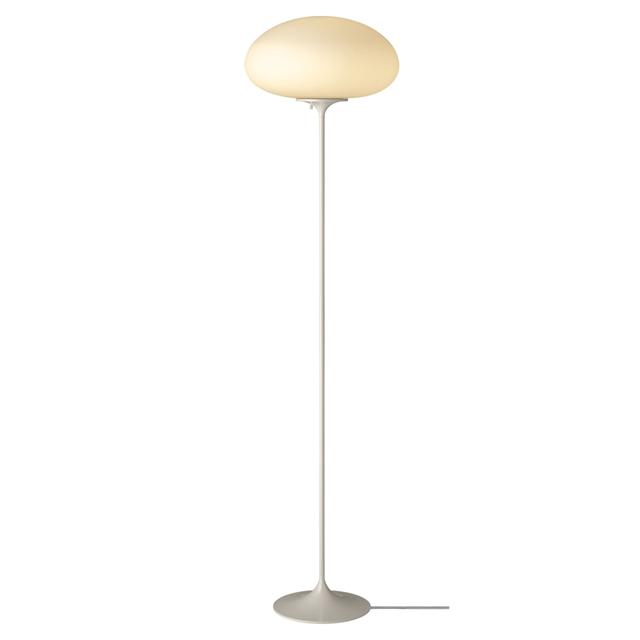GUBI Stemlite Golvlampa Dimbar Stor Grå
Design: Stemlite designad av Bill Curry, 1962 Koncept: Idén bakom designen för Stemlite baserades på en förhoppning från Bill Currys sida om att kunna ändra normerna för lampdesign. Han ville skapa en lampa som inte bestod av den på den tiden annars så traditionella bas, glödlampa och lampskärm. Curry ville skapa en lampa som kombinerade de tre komponenterna till en organisk, färgglad lampa. Den önskan resulterade i den första ''Total look''-lampan, Stemlite. Designen hämtar inspiration från blommor som med sina starka men tunna stjälkar kan hålla ett tungt blomhuvud upprätt. Detta kan också ses på metallen som efterliknar stjälkarna på en tulpan. Via den munblåsta glaskulan på toppen skapar Stemlite ett lugnt och behagligt diffust ljus som kan justeras via den inbyggda dimbara funktionen. Stemlite var Bill Currys bästsäljande kollektion och användes även för att presentera amerikansk design i Sovjetunionen, Jugoslavien och Irak på 1960-talet. Stemlite har väckts till liv igen av GUBI för att återintroducera världen till Bill Currys fantastiska verk. Stemlite-kollektionen finns även som bordslampa, taklampa och golvlampa. Som en uppdatering av Stemlite-serien har denna vägglampa en inbyggd dimbar funktion.
GUBI Stemlite Floor Lamp - H150 (Pebble Grey, Frosted Glass)
The Stemlite (1962) was the first ‘total look’ lamp, a pioneering new typology conceived by American Designer Bill Curry, which replaced the traditional base-plus-shade form with a single self-contained unit comprising interchangeable modules. His debut design, the much-emulated Stemlite, was named “most influential lamp of the year” by Industrial Design Magazine in 1965, used on the set of the original Star Trek TV series, and remained in pro- duction until 1977. Now remastered by GUBI after almost half a century, the new collection comprises two table lamps, two floor lamps and a new pendant – a simple inversion of the original design – in a contemporary yet authentic color palette. Today’s Stemlite remains true to Curry’s designs, comprising three of the original heights: two table heights, one of which was originally conceived as a floor lamp and the original floor lamp height. A second, taller floor lamp has been added and a pendant light has been engi- neered by simply flipping the original design upside-down. A counterweight has been hidden in the negative space created by the geometry of the foot of the upright lamps to meet con- temporary safety requirements regarding stability and versions of the floor and pendant lights with new larger globes are also available.

